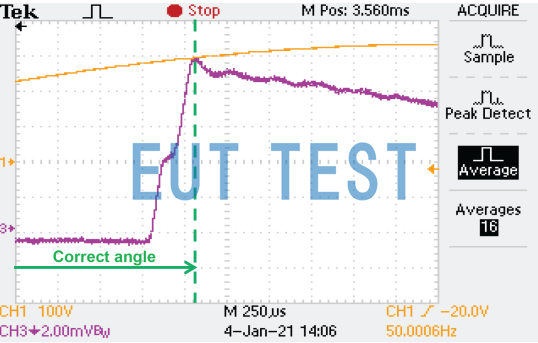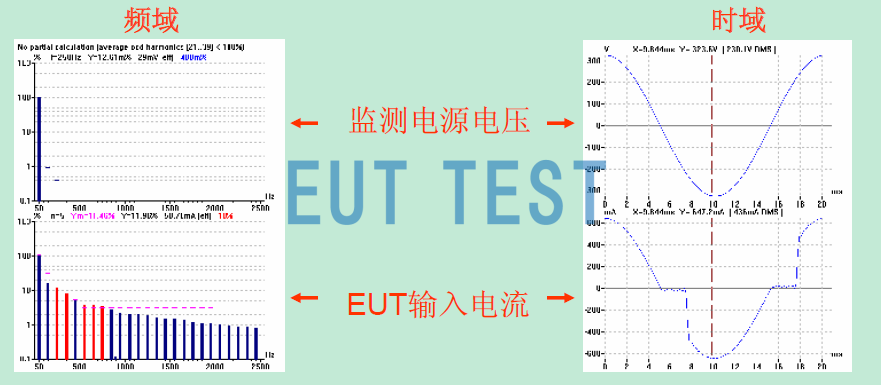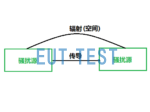The IEC 61000-3-2 2018 standard replaces the 2014 standard:
Recently, the IEC Technical Sub-Committee TC 77/SC77A Department of the International Electrotechnical Commission (IEC) published the 5th edition of the standard IEC 61000-3-2:2018 for harmonic current emission:
- The latest standard version of the current Harmonic Measurement 2024:IEC 61000-3-2:2018+AMD1:2020+AMD2:2024 CSV Edition 5;
- Brand new standard number and name:IEC 61000-3-2 2018 Electromagnetic compatibility (EMC) - Part 3-2: Limits - Harmonic current emission limits (equipment input current ≤ 16A/phase);
- The new standard release date is 2024-03-04;
- Standard stabilization date: 2026;
- Replaces IEC 61000-3-2: 2014 Edition 4, published in 2014;
- The latest edition of the EU's EN 61000-3-2:2018 is underway;
- The date of the anticipated announcement (DOA) is on 2018-08-02, in lieu of the withdrawal of the previous version on 2018-11-02;
Purchase the latest IEC61000-3-2 standard online as a PDF document.The
List of updates to the different versions of IEC 61000-3-2:
<<<<提醒:左右滑动表格>>>>| releases | Release Date | come off the press | minor version | standard conditions |
| Edition 5 | 2024-03-04 | IEC 61000-3-2:2018+AMD1:2020+AMD2:2024 CSV | 5.2 | usability |
| 2020-07-14 | IEC 61000-3-2:2018+AMD1:2020 CSV | 5.1 | usability | |
| 2024-03-04 | iec 61000-3-2:2018/amd2:2024 | 5.0 | usability | |
| 2021-08-27 | iec 61000-3-2:2018/amd1:2020/ish1:2021 | 5.0 | usability | |
| 2020-07-14 | iec 61000-3-2:2018/amd1:2020 | 5.0 | usability | |
| 2018-01-26 | iec 61000-3-2:2018 | 5.0 | usability | |
| 2018-01-26 | IEC 61000-3-2:2018 RLV | 5.0 | usability | |
| Edition 4 | 2014-05-26 | IEC 61000-3-2:2014 | 4.0 | lose effectiveness |
| Edition 3 | 2009-08-12 | iec 61000-3-2:2005+amd1:2008+amd2:2009 csv/cor1:2009 | 3.2 | lose effectiveness |
| Edition 2 | 2004-11-10 | IEC 61000-3-2:2000+AMD1:2001+AMD2:2004 CSV | 2.2 | lose effectiveness |
| Edition 1 | 1998-04-23 | IEC 61000-3-2:1995+AMD1:1997+AMD2:1998 CSV | 1.2 | lose effectiveness |
The new standard has new requirements for lamps and other similar equipment:
The changes in the new version of the standard are mainly reflected in the major differences in the requirements for lighting equipment, so manufacturers related to lighting products need to pay attention to the latest changes in the standard, which applies to electrical and electronic equipment connected to the public voltage distribution system with an input current of not more than 16A per phase, compared with IEC 61000-3-2:2014, the main technical changes in the section on lighting equipment are as follows:
Standard Update Content:
IEC 61000-3-2:2018+ AMD 1:2020+ AMD 2:2024 CSV deals with the limitation of harmonic currents injected into the public supply system. It specifies limits for the harmonic components of the input current that may be generated by equipment tested under specified conditions.
This standard applies to electrical and electronic equipment with a rated input current of 16 A / phase inclusive and intended to be connected to a public low voltage distribution system.
This document covers non-professional equipment arc welding equipment with a rated input current not exceeding 16 A/phase inclusive. arc welding equipment for professional use as specified in IEC 60974-1 is not included in this document and may comply with the installation limits specified in IEC 61000-3-12. The tests performed according to this document are type tests.
For systems with a nominal voltage less than, but not equal to, 220 V (line-to-neutral), limits have not been considered.
The fifth edition replaces, as well as cancels, the fourth edition published in 2014, which was a technical revision.
This release includes the following major technical changes from the previous release:
- Updating of emission limit values for lighting equipment with rated power = 25 W to take into account new types of lighting equipment.
- Adding a threshold of 5 W below which all lighting equipment is exempt from the application of the emission limit values.
- Modification of requirements applicable to dimmers when operating non-incandescent lamps.
- Addition of test conditions for digital load-side drive controls.
- Elimination of the use of reference lamps and reference ballasts for the testing of lighting equipment.
- Simplifying and clarifying the terminology used for lighting equipment.
- Class A classification of professional luminaires for stage lighting and studio use.
- Clarify the classification of emergency lighting equipment; and
- Illustration of a lighting device including a control module with an effective input power = 2 W.
- Updating of test conditions for television receivers.
- Updating the test conditions for induction ovens, taking into account other types of cooking appliances.
- For consistency with IEC 61000-3-12, the scope of IEC 61000-3-2 has been changed from equipment with input current = 16 A to equipment with rated input current = 16 A. The scope of IEC 61000-3-2 has been changed from equipment with input current = 16 A to equipment with rated input current = 16 A.
Updated presentation of the correct phase angle assessment method:
The second set of requirements in 7.4.3 of IEC 61000-3-2:2018 and IEC 61000-3-2:2018/AMD1:2020 requires that "the waveform of the input current shall meet the 5% current threshold at or before 60°, have a peak at or before 65°, and be no lower than the 5% current threshold at or before 90°, with reference to any zero-crossing of the base supply voltage" and that "frequencies above 9 kHz shall not affect this assessment (similar to the base supply voltage can be used). peak before or at 65° and not below the 5% current threshold before 90°, with reference to any zero-crossing of the fundamental supply voltage" and "Frequencies higher than 9 kHz shall not affect this evaluation (a similar method to that described in IEC 61000-4-7:2002 and IEC 61000-4-7:2002/AMD1/AMD1/AMD1/AMD1/AMD1/AMD1/AMD1/AMD1/AMD1/AMD1/AMD1/AMD1/AMD1). :2008 5.3);".
Question: When applying the second set of requirements in 7.4.3, what method should be used to measure the phase angle to avoid the effects of current components at frequencies above 9 kHz?
Explanation: In view of the problem reported by the test laboratory, if the phase angle is measured using the IEC 61000-4-7 test system without correctly removing the components above 9 kHz, the results of the digital oscilloscope measurements shall prevail, where the components above 9 kHz, 9 kHz, have been removed without affecting the phase angle at which the peak current occurs.
Note This can be achieved, for example, by using the synchronized averaging mode of the oscilloscope (see Figure 2).
Figures 1 and 2 below show the incorrect method of evaluating the phase angle and the correct method of evaluating the phase angle.

Figure 1: Methods for incorrect assessment of phase angle

Figure 2: Correct method of evaluating phase angle - correct measurement using a mean value detector
The standard adds categories of products to be tested:
The new version of the standard in the rated power of 5W ≤ P ≤ 25W of new lighting equipment (such as LED control devices and lamps and lanterns, etc.) need to increase the test, involving a wide range of product categories, such as a number of low-power LED lighting products, including: LED table lamps, LED bulbs, LED tubes, etc. need to increase the test.
Our national standards for harmonic and flicker testing:
Our national test standards are based on an older version of IEC 61000-3-2, but we are following the lead of the IEC in updating the technical requirements for harmonics and flicker testing.The most recent list of harmonics standards for our country, as of November 2024, is shown below:
- GB 17625.1-2022 Electromagnetic compatibility limits Part 1: Harmonic current emission limits (equipment input current per phase ≤ 16A)
- GB/T 17625.8-2015 Electromagnetic compatibility limits Harmonic current limits from equipment connected to the public low voltage system with input current greater than 16A and less than or equal to 75A per phase
- GB/Z 17625.6-2003 Electromagnetic compatibility limits Limits for harmonic currents generated in low-voltage power supply systems by equipment with a rated current greater than 16A.
- 20240828-T-469 Electromagnetic compatibility limits Part 12: Limits for harmonic currents generated by equipment connected to the utility low voltage system with input currents greater than 16A and less than or equal to 75A per phase
- Obsolete: GB 17625.1-2012 Electromagnetic compatibility limits Harmonic current emission limits (equipment input current per phase ≤ 16A)
- Obsolete: GB 17625.1-2003 Electromagnetic compatibility limits Harmonic current emission limits (input current per phase of equipment ≤ 16A)
Attention:
Previously purchased harmonic measurement equipment no longer meets the requirements of IEC 61000-3-2-2018, Shenzhen EYT Test Technology Co., Ltd. provides the latestIEC 61000-3-2-2018 Harmonic measurement equipmentCan meet the above new requirements, contact us for more information on test instrumentation for IEC 61000-3-2-2018.
You may also need to know about lamps and other similar equipment:Access certification requirements for LED luminaires exported to different countries such as the EU and the US
Introduction to Harmonic and Flicker Testing:
Harmonics and interharmonics are caused by modern electronic power conditioning modules. Most such nonlinear modules used to control loads and reduce power consumption are voltage sources of undesired frequency superimposed on the supply voltage. Voltage fluctuations caused by varying load currents may affect the brightness or spectral distribution of a lighting system. The impression of visual instability caused by this light stimulus is called flicker.
Applying Harmonic Groups to Evaluate Harmonics
According to the new IEC/EN 61000-4-7 (2002) standard, harmonic groups are also used to assess the magnitude of harmonics.
The value of a given harmonic group is equal to the sum of the squares of the interharmonics in the middle of the two harmonics adjacent to it. The specific formula is as follows:

Harmonic Test Calculation Formula

Real-time monitoring of harmonic currents and voltages from AC sources
Precise synchronization of fundamental frequency and sampling rate
According to the requirements of the new IEC/EN 61000-4-7 (2002) standard, the measurement window needs to be set as follows: A rectangular window of 10 (50 Hz) or 12 (60 Hz) cycles is used.

Precise synchronization of fundamental frequency and sampling rate
This measurement process is defined as the standard method. If the tester chooses an alternative method, the range of uncertainties due to factors such as signal instability, pseudo-signals and synchronization failures should be stated.
Product Recommendation Harmonic and Flicker Test AnalyzerThe


